Over the winter I re-read “The Last Lemon Grove”, a gift from visiting friends a couple of years ago. Written by American Jackson Webb, published 1977, it tells of the author’s one-year sojourn in Paleochora in the early 70s, living alone and simply, and his affinities with various animals and pets, neighbours, and the local community.
It’s a quirky book, and you need to know something of Paleochora, its past and people, to appreciate it fully.
One particular paragraph rather jumped off the pages :-
“ … the bus will coast out between the eucalyptus trees and onto the canyon bridge
with a bump, grinding up through the rocks to Spanyako again. And after an hour,
the cloudy twin peninsulas and the straight line of the north shore will start to
show ahead between the mountains. Then the loud music will play while everyone’s
sick, winding down the foothills into the white town of Vukolies, and a completely different afternoon …. “
The bus journey over to Chania is still an experience, although both the buses and roads have been modernised. The eucalyptus trees are still there, the bridge widened, the road straightened, the music still plays (but no smoking, except maybe the driver), Gramvousa and Rodopou still come into view, and Chania, when you reach there, often seems a different world.
Here’s an afternoon walk, taking the 3.30pm bus to Kalamos, walking up into Spanyako (sic), and returning on the bus leaving Chania at 4pm, picking you up at approx. 5.30pm below Spaniakos. Jump off the bus beside the olive mill in Kalamos, just a ten minute and 6 km journey (by car, there’s a parking place close by.)
Just above the mill, by stone steps to the former ‘platea’, and almost hidden, is Agios Ioannis, with old and rare frescoes ; a quick visit here is recommended.
Begin the walk by setting off back 700m to Paleochora, over the road bridge, around a bend, and then turning left up a track signed (currently at least) to Spaniakos.
Confirm you’re correct by passing a fridge after 150m, and continue ahead. The track winds onwards and upwards, soon with Spaniakos’ main church, Panagia, in view above the hamlet of Giannakiana.
Eventually the track joins a surfaced road, where you turn left, but pause here to enjoy the view, and get your breath back. Across the valley is the ridge leading to the masts above Paleochora (see ‘Explore’ Oct 2014), and to its north a similar ridge ending at Kastri, 820m, above Sarakina (‘Explore’ Sept 2015.) In between is a glimpse of Sklavoploula (‘Explore’ June 2015.)
Walk on, flat now, into the ‘centre’ of Spaniakos, still known as ‘Tzami’, the Greek for ‘mosque’. Here, during the long Turkish occupation, and where the (closed) school is now, stood the largest mosque in Crete, built c.1670, and only destroyed in 1897 following an uprising by resistance fighters. Spaniakos was the religious centre for Turkish villages of the area, its residents forced to convert to Islam. The 1881 census records a population of 136, with 41 Moslem families and only 4 Christian. Nothing remains of the mosque, although the ruined Turkish fort above the village survives and can be visited (‘Explore’ Nov 2013).
Above Spaniakos lives Andreas Kontorinis, born here some ninety years ago, who has told me so much about the village. He attended the school in the 1930s – “ just one class, 55 pupils aged 6 -12 yrs,” and left when he was twelve. Although, he smiles, “I started work when I was 3,” helping his shepherd father, and spending summers high in the White Mountains “mitata” making cheese. He talks of the harsh war years between 1941-44, the family living frugally on ‘horta’, dairy products when not taken by the Germans, and bread made from carobs. “Diskola,” he says (difficult)
I asked him about the village cafenion ; “Which one ?” he asks, “there were three.” The last, closed around 1970 and now derelict, is opposite the school, and could tell some stories. Occasionally he would travel to Chania, a daily wooden bus in the 1930s carrying passengers and livestock taking four hours.
Spaniakos church is nearby, but better to continue downhill, past the school, then detour 250m to visit Agios Giorgos, peacefully situated, with a rocky outcrop above a meadow behind it making a fine viewpoint.
Return to the road, built only in 1965, before which paths (now overgrown) led from Spaniakos more directly down to meet the main road, closer to Paleohora.
On reaching the Chania road, walk 700m back to Kalamos for your car, or wait at the bus shelter for the short ride back to Paleochora, where, to quote ‘The Last Lemon Grove’ :
“To the east and west, the hills drop sheer on the deserted coastline, with only the
blue-black sea and the faint tipped ramp of Gavdos Island lifting just under the
horizon, quarter way to Africa.”


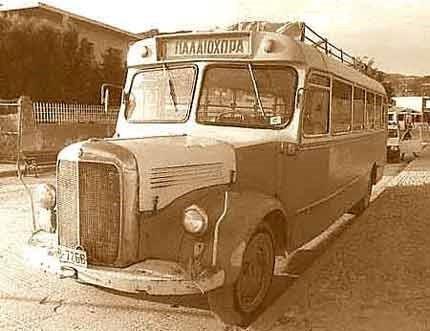
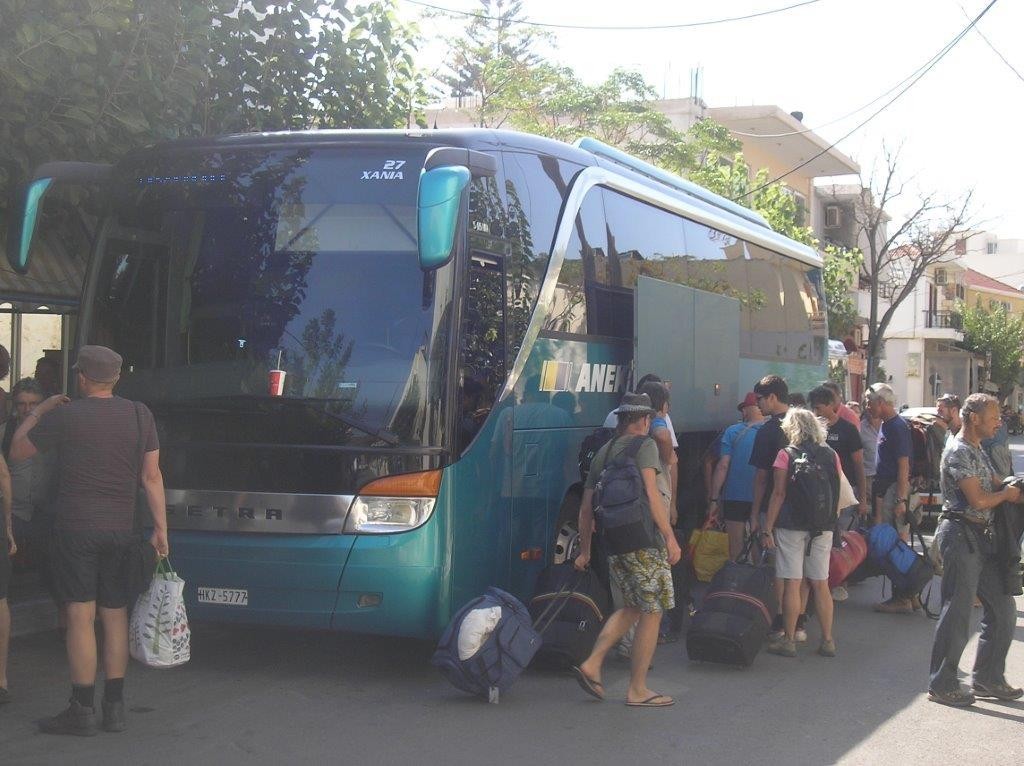
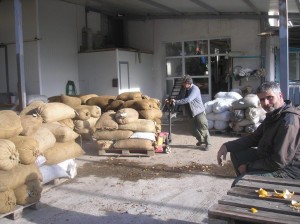
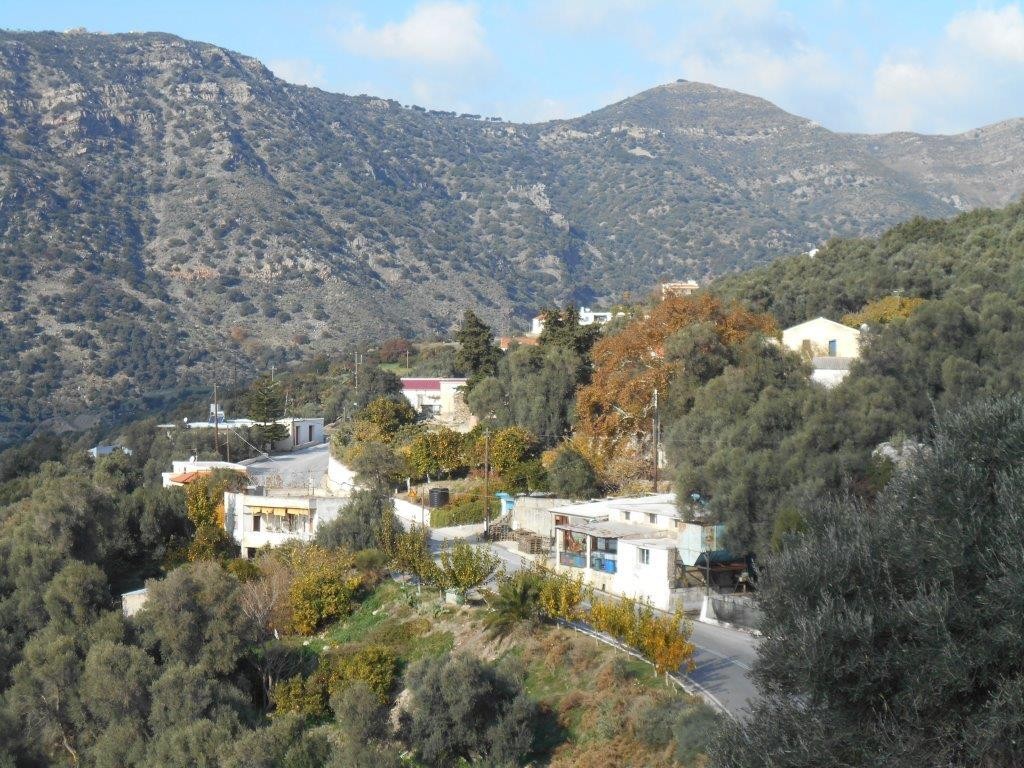
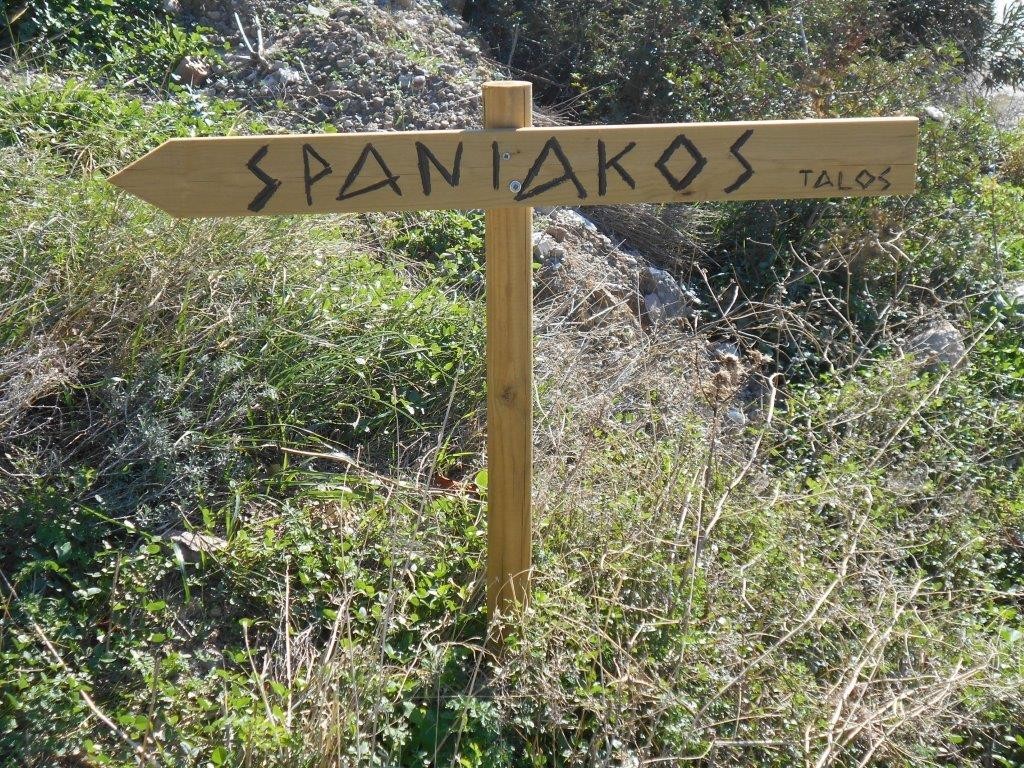
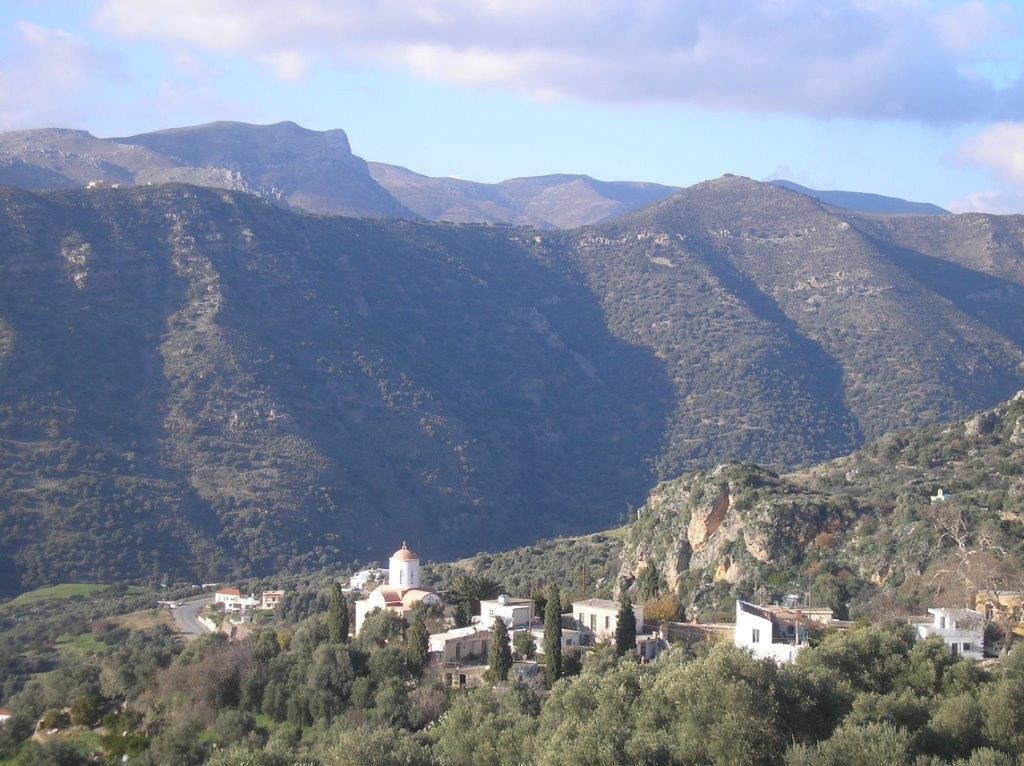
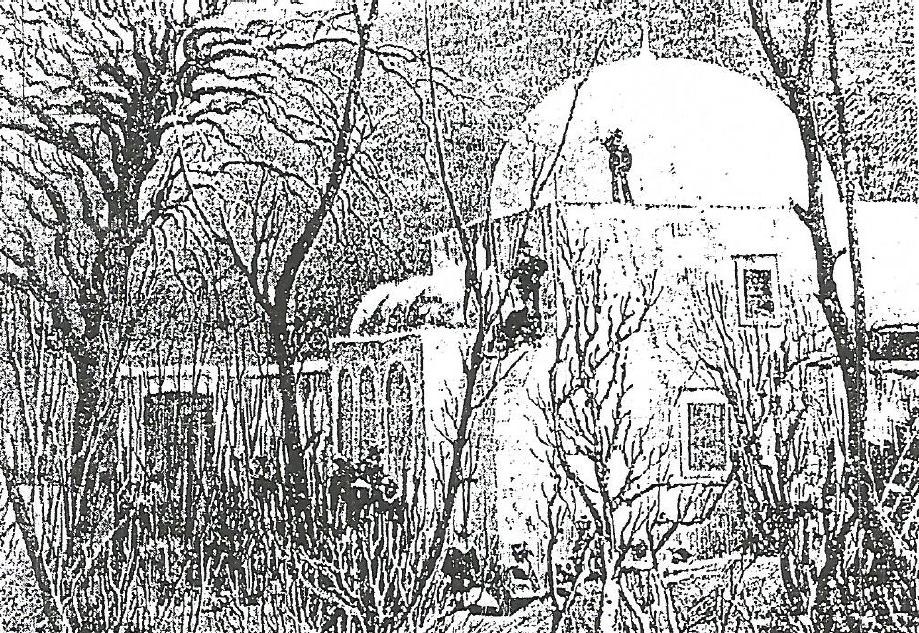
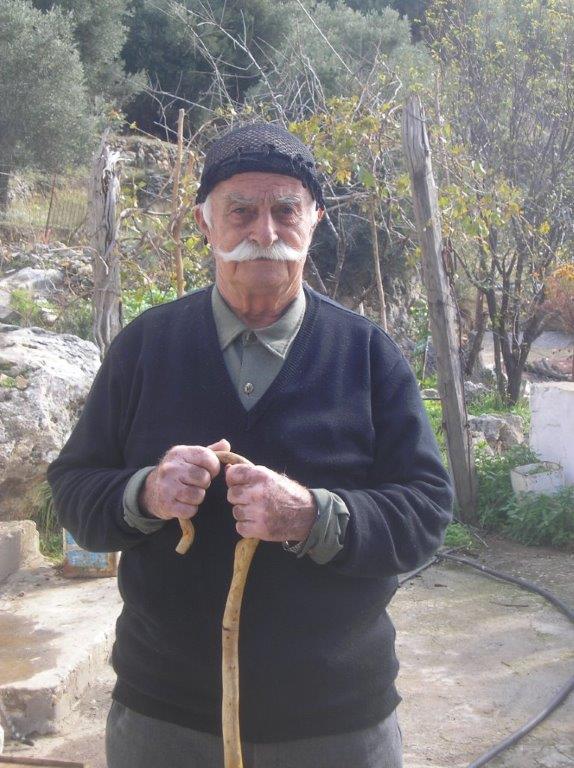
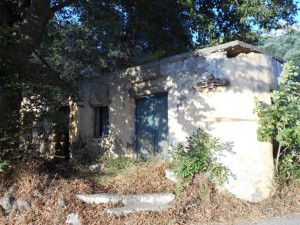
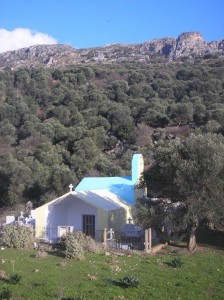
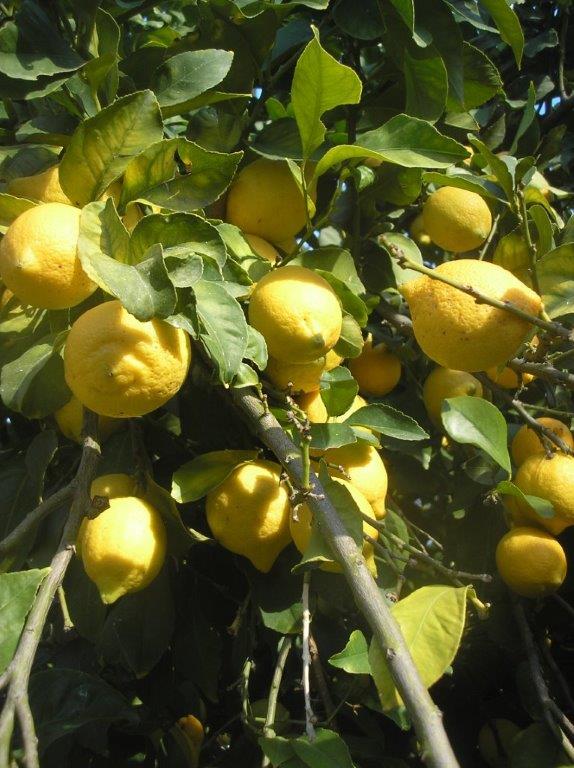

2 comments
Dear admin,
Is there any proper way to access the book’s pdf?
Kind regards.
Author
Hi. The book is out of print but you can search for it on second hand book sites